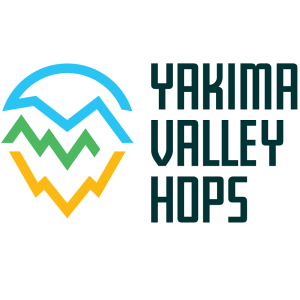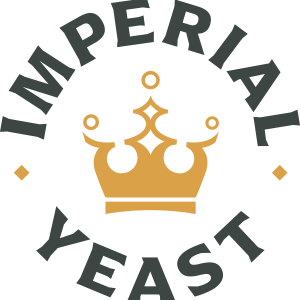The product leadership role itself is getting redefined with the emergence of artificial intelligence (AI), automation, and data science revolutionizing product development, manufacturing, and launch. Amidst a world where technology disruption and transformation are occurring at such a breakneck pace, product leaders need to reinvent themselves to be ahead of the curve. They are no longer product leaders but strategists, creators, and moral guardians working in sophisticated worlds. Similarly, in the beer world—especially among homebrewers—staying ahead means continuously experimenting, adapting to trends, and refining techniques.
The following is an article by pm-kirill-yurovskiy.co.uk on how trends like AI, automation, etc., are revolutionizing product leadership in the future and how an individual would need to survive in this high-speed world.
1. The Evolution of Product Leadership in the Digital Age
Product leadership has evolved from feature delivery to a business function of customer experience, innovation, and outcome. During this revolution of the digital age, product leaders have to reconcile business and technical skills by using data and technology in making decisions. With increased use of AI, machine learning, and automation, they’ve taken their career to a completely new level where they need to be ahead of what comes next and add new tools to their process.
2. How AI is Transforming Product Management
AI is transforming product management to facilitate smarter decision-making and forward-looking analysis. Product managers can now utilize AI to track customer behavior, predict demand, and identify trends within the market. AI solutions, for example, can segment customers, recommend tailored features, and set optimal prices. Product teams can therefore create more targeted and better products and make fewer assumptions. Wherever there is utilization of AI, there is therefore the need for product leaders to learn its edges and ethics.
3. Automation in Agile Development
Automation is revolutionizing product development by automating repetitive, streamlined work and speeding up the process. From test automation to CI/CD pipelines, automation has made it possible for products to be released at record speed but with fewer defects. Due to the leverage automation gives combined with the elasticity of framework strength, product owners are now less inclined to make uncertain decisions about new markets and user requirements. Automation does create a necessity, however, for team dynamics to change regarding how product leaders need to position their teams to work with smart systems.
4. The Role of Data Science in Product Decision-Making
Data science is a second corner of product leadership, shaping strategy and innovation through insights. Trends are explainable, outcomes are forecastable, and product leaders make decisions through the analysis of large data sets. To illustrate, A/B testing and user analytics rationalize product features, and predictive modeling predicts market change. Data dependence also requires that product leaders manage data quality, privacy, and ethical use.
5. Cross-Functional Team Management for Remote Work Environments
Remote work has introduced a new layer of complexity to product leadership. With the need to manage cross-functional teams across time zones and cultures, reducing communication, coordination, and trust abilities is especially critical. Slack, Zoom, and project management tools are the bare minimum needed in order to remain productive and on track. A sense of belonging and purpose is what the product managers themselves need to establish among the remote workers so that they feel grounded and energized.
6. Risk Management with Innovation Being Balanced
Product leadership is risk-balanced and innovation-driven. The product leader will thus need to counter risks such as technological meltdown, regulatory chaos, and market volatility. This requires an interventionist approach in terms of experimentation, scenario planning, and risk scanning. With controlled risks, product leaders can radically change within and break free from their destructive influence. In homebrewing, a similar approach allows brewers to push boundaries—experimenting with ingredients, testing new techniques, and preparing for unexpected outcomes—while still maintaining control over quality and consistency. This balance between bold innovation and calculated risk is key to both standout leadership and exceptional brewing.
7. The Ethical Challenges of AI Products
With more and more use of AI in products, there are also ethical concerns raised. Product managers now have to contend with algorithmic prejudice, data privacy, and the societal impact of AI solutions. For example, AI-driven recommendation algorithms have the collateral effect of reinforcing stereotypes or discrimination against communities. Product managers need to make their products clear, equitable, and traceable, besides following evolving regulations.
8. Competitive Analysis under a Dynamically Changing Market
Where the market is always changing, staying ahead of the pack requires incessant focus and vigilance. Product leaders will need to continuously perform competitive analysis in order to stay aware of the changing trends, risks, and opportunities. SWOT analysis, market maps, and customer feedback loops are the correct tools to use in order to achieve this. Through the knowledge of the competitive landscape, product leaders will be able to position their products to survive and endure disruption.
9. Subscription plan and loyalty policy formulation
Subscription business models are revolutionizing product leadership because the focus is now on long-term customer relationships rather than a single purchase by the buyer. Product leaders must create products that offer value in the long term in a bid to acquire and retain customers. In-depth customer understanding of their needs, wants, and likes to apply strategies such as personalized onboarding, frequent updates, and timely customer support to build long-term relationships and minimize churn.
10. Future Trends: What’s Next for Product Managers?
Some significant trends will drive product leadership in the future. They are more focused on sustainability, the application of AI and IoT in products, and the appearance of decentralized technologies like blockchain. The product leaders also need to get ready for more use of voice interfaces, AR, and VR in products. Adoption of these trends would demand ongoing learning, adaptability, and long-term thinking.
Product leadership in the future will be challenging and thrilling with AI, automation, and disruption reshaping the role. Future product leaders must be prepared to embrace new technology, cross ethical hurdles, and drive innovation in the midst of risk and uncertainty. Lean, data-driven, and customer-focused, they can guide their companies to triumph in a world of increasing change. This mindset also resonates in the homebrewing community, where innovation, experimentation, and adapting to new tools are essential for crafting standout brews. Just as homebrewers tweak ingredients and processes to match evolving tastes, modern leaders must refine their strategies to meet shifting demands. The future is reserved for people who can harmonize tradition and innovation, strategy and execution, bringing forth products that not only cater to markets’ needs but also chart the path of the future.








